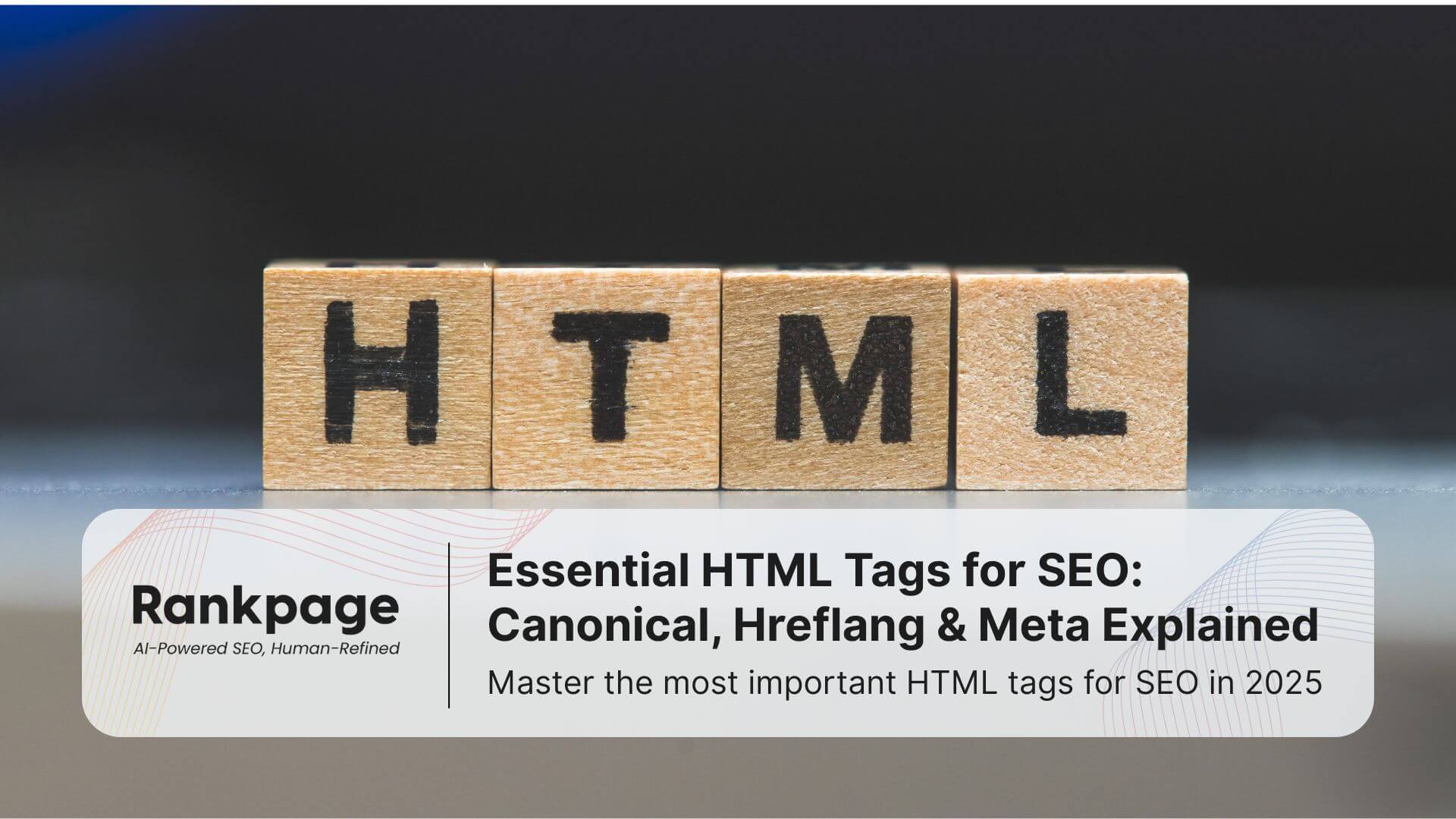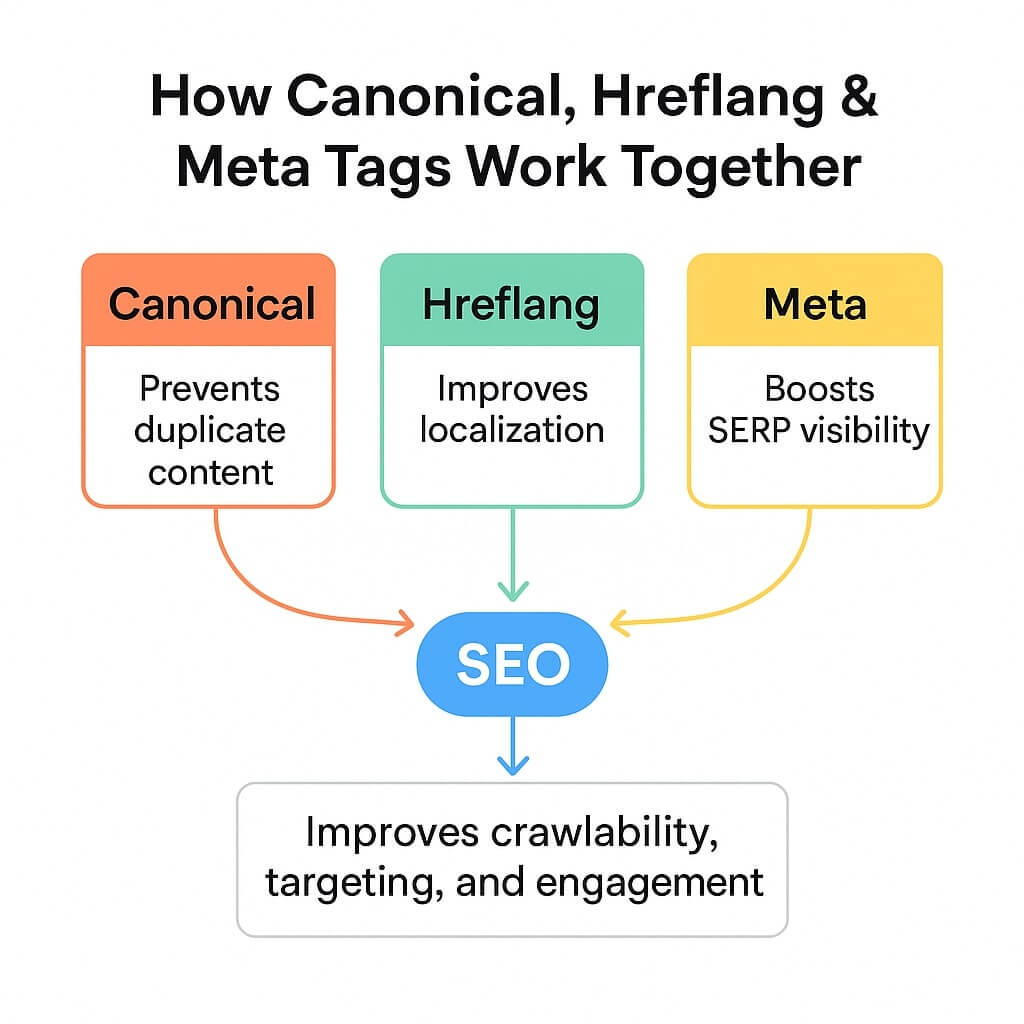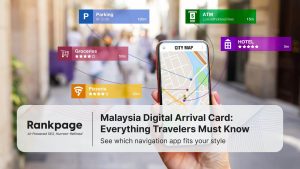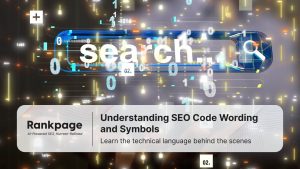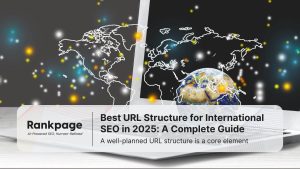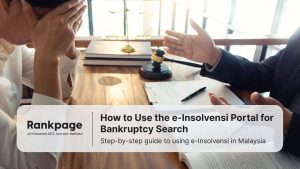Key Takeaways
- Canonical tags prevent duplicate content issues and consolidate SEO authority.
- Hreflang tags tell Google which language and regional version of a page to show.
- Meta tags shape how your content appears in search results and affect click-through rates (CTR).
- Placing tags inside the <head> section ensures Google correctly reads and applies them.
- Using the right SEO tags improves visibility, relevance, and ranking across local and international markets.
You may think HTML tags are only for developers, but HTML SEO tags for Malaysian businesses and international SEO can significantly boost your website rankings.
Tags like rel=”canonical”, rel=”alternate” (hreflang), and meta tags help Google search engines understand your content better, avoid duplication, and serve the right content to the right users.
In this guide, we’ll break down the most essential HTML SEO tags that every business website should implement with clear examples and use cases, especially useful for brands expanding across markets like Malaysia, Singapore, Indonesia, or other multilingual markets.
Table of Contents
1. Canonical Tag
Purpose: Tells search engines which version of a URL is the main one, preventing duplicate content issues.
When you have multiple pages with similar or identical content (such as filtered variations or tracking parameters), Google may get confused and split ranking signals. A canonical tag tells search engines: “This is the primary version of the content.”
Example:
<link rel="canonical" href="https://example.com/shoes" />Use When:
- Product pages with multiple filters
- Pages accessible via multiple URLs
- Reposted or syndicated content
SEO Benefit: Consolidates link equity, avoids duplicate content penalties, and ensures the right page ranks.
2. Hreflang Tag
Purpose: Help Google show the correct language or regional version of your webpage.
If your site targets users in Malaysia, Singapore, and Indonesia, each with English or local content, you must use hreflang to avoid showing the wrong version to the wrong audience.
Example:
<link rel="alternate" hreflang="en-my" href="https://example.com/my/" />
<link rel="alternate" hreflang="en-sg" href="https://example.com/sg/" />
<link rel="alternate" hreflang="id-id" href="https://example.com/id/" />
<link rel="alternate" hreflang="x-default" href="https://example.com/" />
Best Practices:
- Make sure every page links back to the others like each store having directions to the other branches.
- Use full (absolute) URLs, not relative ones.
- Put these instructions in your website’s “blueprint” (either the page <head> tags or XML sitemap).
- Include a default version (x-default) for people who don’t match any language (like an international homepage).
SEO Benefit: Improves user experience and local rankings while preventing duplicate content across regions.
3. Meta Tags for SEO
Purpose: Meta tags provide information about your page to search engines and influence how it appears in SERPs. While they don’t directly impact rankings, they strongly affect click-through rates (CTR) and indexing.
Important Meta Tags:
Meta Title (via <title>)
<title>Best SEO Agency for SMEs in Malaysia</title>
- Appears as the clickable blue link in search results.
- Keep under 60 characters and include target keywords early
Meta Description
<meta name=”description” content=”Learn about the best SEO agency for Malaysian SMEs in 2025. Tips, tools, and local trends.” />
- Appears under the title as a short summary.
- Keep under 160 characters and write for engagement.
Meta Robots
<meta name=”robots” content=”index, follow” />
- Tells search engines whether to index the page or follow its links.
SEO Benefit: Improves presentation in SERPs, drives more clicks, and controls how pages are crawled.
How These Tags Work Together
Think of these tags as your site’s SEO navigation system (site’s roadmap).
- Canonical tags prevent SEO duplication.
- Hreflang ensures the right regional/language version appears.
- Meta tags enhance your visibility and CTR in search results.
Where to Place These Tags?
All tags above go inside your HTML page’s <head> section, not in the body.
Why? Because search engines read the <head> first to understand what the page is about before crawling the body.
Example Structure:
<head>
<title>Your Page Title</title>
<link rel="canonical" href="https://domain.com/my/" />
<link rel="alternate" hreflang="en-my" href="https://domain.com/my/" />
<link rel="alternate" hreflang="en-sg" href="https://example.com/sg/" />
<link rel="alternate" hreflang="x-default" href="https://example.com/" />
<meta name="description" content="Your description here." />
<meta name="robots" content="index, follow" />
</head>
Fun Fact:
- Space between attributes (like rel=”…” and href=”…”) is required
- Space before the self-closing slash (/>) is optional
Tip: If you’re using WordPress, plugins like Rank Math or Yoast SEO handle these automatically, just need to double-check their output.
Canonical vs Hreflang vs Meta
Tag Type | Function | SEO Benefit | Where It Goes |
Canonical Tag | Declares the original URL | Consolidates ranking signals | <head> |
Hreflang Tag | Specifies language & country version | Shows right version to right user | <head> or sitemap |
Meta Description | Summarises content for SERP snippet | Boosts click-through rate (CTR) | <head> |
Meta Robots | Index/follow instructions | Controls crawling behavior | <head> |
Related reading: Best URL Structure for International SEO in 2025: A Complete Guide for Malaysian Businesses
Common Mistakes to Avoid
No Canonical Tag:
Google might see the same page under different URLs and treat them as duplicates, which weakens your ranking power.Wrong Hreflang Setup:
Using the wrong country or language code can make your Malaysian users see the Singapore page (and vice versa).Overlong Meta Descriptions:
Google cuts off anything too long, so your message may not show fully in search results.Accidental “Noindex”:
If a page has noindex, Google will skip it, meaning it won’t appear in search at all.Tags in the Wrong Place:
Tags belong in the <head> section of your page, not the body. Otherwise, Google ignores them.Using Short (Relative) URLs:
Always use full URLs (like https://example.com/page) in canonical or hreflang tags so Google knows exactly which page you mean.Repeating Titles or Descriptions:
Each page needs its own unique title and description — duplicates confuse both users and Google.
Tools to Check Your SEO Tags
- Google Search Console: Check indexing status, see errors with hreflang or canonical.
- Ahrefs / SEMrush / Moz: Crawl reports for canonical and meta tag issues.
- Screaming Frog SEO Spider: Free/paid tool for deep audits including all tags.
- Hreflang Generator Tool: Auto-generate correct hreflang tags for your URLs.
Conclusion: Small Tags, Big SEO Impact
SEO isn’t just about keywords and backlinks, technical signals like canonical, hreflang, and meta tags play a silent but powerful role in how your site performs.
Whether you’re a Malaysian business targeting local audiences or expanding to Singapore, Indonesia, or beyond, implementing these tags correctly helps:
- Avoid duplication and SEO cannibalisation
- Improve localization and user experience
- Boost visibility in the right markets
Need help auditing or implementing your technical SEO tags?
Rankpage, a trusted SEO agency in Malaysia, helps businesses audit, clean up, and optimize their site structure for long-term search growth.
Frequently Asked Questions About HTML Tags for SEO
What is the difference between canonical and hreflang tags?
Canonical resolves duplicate content. Hreflang tells Google which language or country the page is for.
Do I need hreflang if I only have one language?
No. Only use hreflang if you’re targeting users in multiple languages or regions.
Can I use both canonical and hreflang on the same page?
Yes, and you should. Canonical handles duplication, hreflang handles language/region.
Does the order of tags in the head matter?
Not critically, but keep them grouped and clean for easier debugging.
How do I check if these tags are working?
Use Google Search Console, Screaming Frog, or Ahrefs for verification.
Can meta tags affect my search ranking directly?
Meta tags like title and description don’t directly change rankings, but they influence how your pages appear in search results. Well-crafted meta tags can improve click-through rates (CTR), which indirectly helps SEO by driving more engaged traffic to your site.

